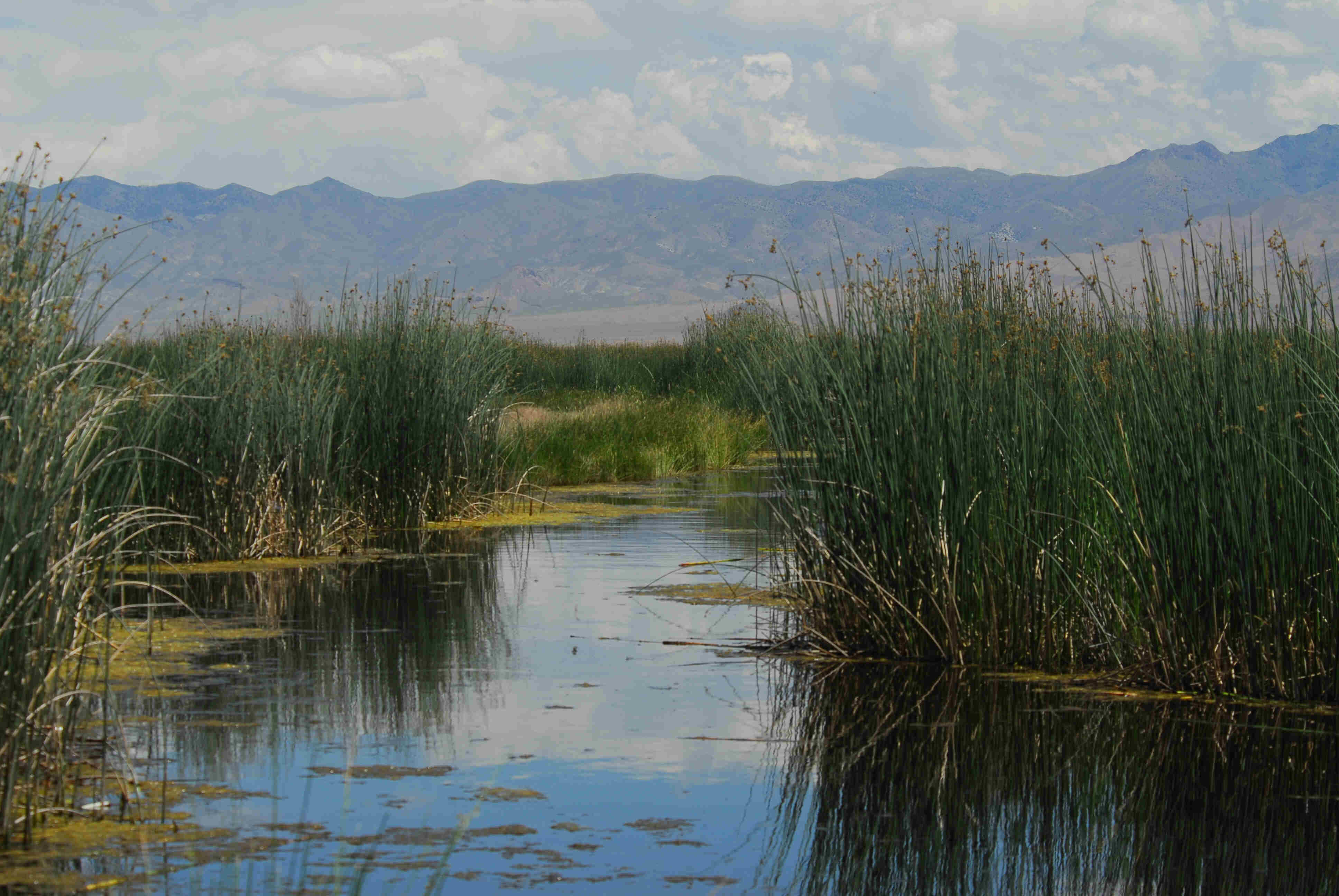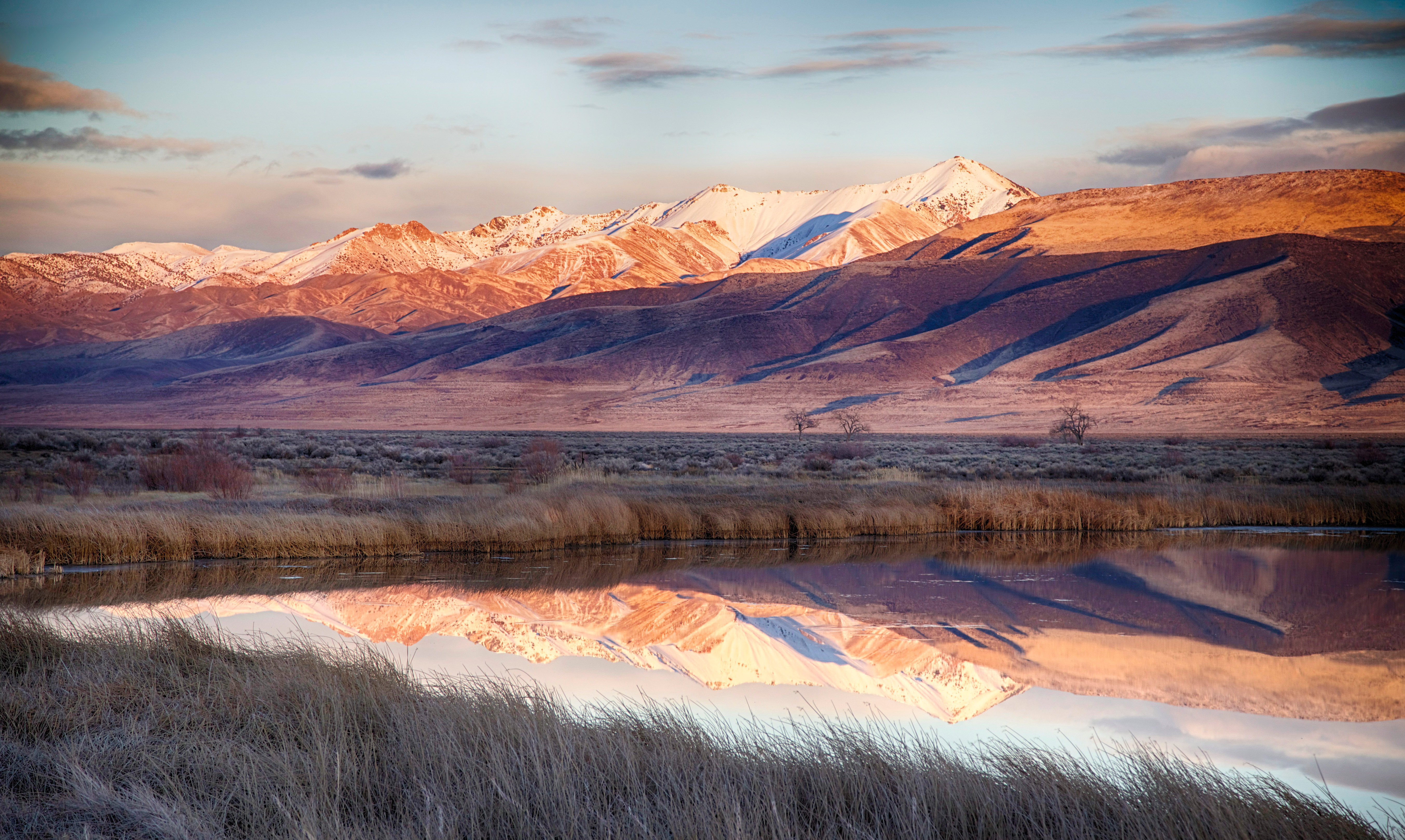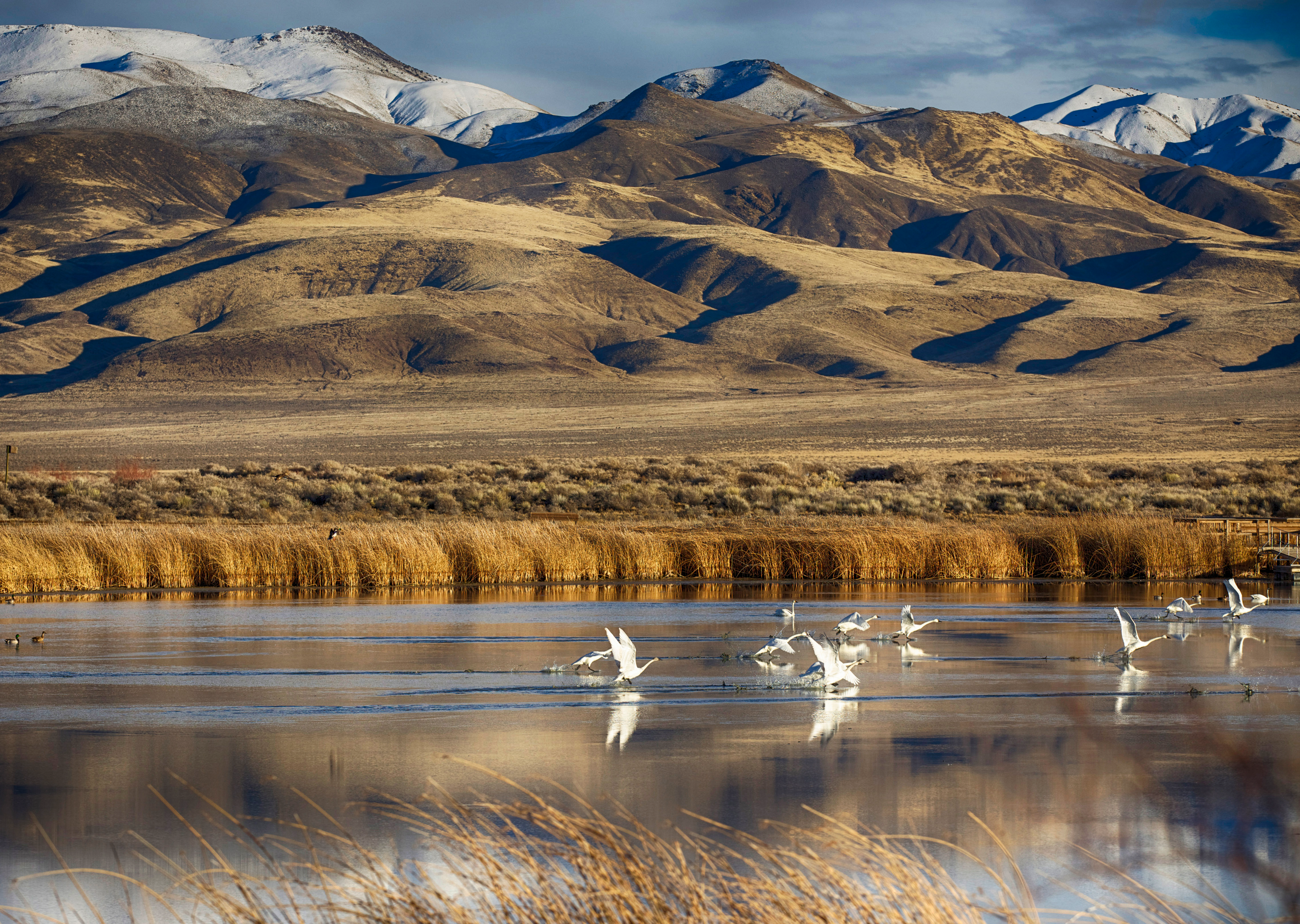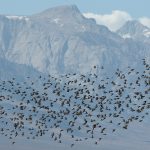A shorebird, slightly larger than a robin with longer legs and a much longer bill, probes in the salty mud looking for invertebrates. This bird, a Long-billed Dowitcher (Limnodromus scolopaceus), has flown over 3,000 miles from southern Mexico. Now he is in the middle of the Great Basin Desert and his rest stop is the Lahontan Valley Wetlands.
The Lahontan Valley Wetlands site encompasses lands from Stillwater National Wildlife Refuge, Carson Lake and Pasture, Stillwater Management Area, and Paiute-Shoshone Tribe. Historically, the Lahontan Valley Wetlands supported 250,000 shorebirds annually. Of these, the Long-billed Dowitcher was the most abundant species — there were single-day counts of more than 100,000.

Stillwater Marsh in spring. Photo: Marie Nygren/USFWS.
Designated in 1988, the Lahontan Valley Wetlands celebrated its 30th anniversary as a Western Hemisphere Shorebird Reserve Network (WHSRN) site this May. 30 years later, partners remain committed, said Jenni Jeffers, Wildlife Biologist for the Western Region of Nevada Department of Wildlife, “We are fortunate to be a partner in this critical network for migratory birds and we will continue to provide the best possible wetland habitat in the future.” In addition to its WHSRN designation, both the American Bird Conservancy and National Audubon Society recognize the Lahontan Valley Wetlands as an ‘Important Bird Area.’
When the 220,000 acres of Lahontan Valley Wetlands were designated it was among the elite, as it was only the fourth site to join the Network. WHSRN now has 104 sites in 17 countries, with 38 million acres. Partners at these sites have committed to conserving and managing their sites to benefit breeding, migrating, and wintering shorebirds. As Deputy Project Leader of Stillwater National Wildlife Refuge, Carl Lunderstadt, said “The Lahontan Valley Wetlands are an incredibly important resource and the passion people have for them never ceases to amaze me – it’s as strong today as it was 30 years ago.”

Lahontan Valley in winter. Photo: Marie Nygren/USFWS.
The area is mainly fresh and alkaline marshes vary from several centimeters to a meter in depth. These are dependent upon water allocations from Carson River and return flows from irrigation projects. Available water is also dependent on a good snow year in the Sierra Nevada, the water source of Carson River.

Lahontan Valley Wetlands. Photo: Marie Nygren/USFWS.
Resting and refueling in these snow-melt wetlands, the Long-billed Dowitcher is joined by Wilson’s Phalarope (Phalaropus tricolor), Red-necked Phalarope (Phalaropus lobatus), Western Sandpiper (Calidris mauri), and Dunlin (Calidris alpina), before they continue on to nest in the Arctic. American Avocet (Recurvirostra americana), Black-necked Stilt (Himantopus mexicanus), and Snowy Plover (Charadrius nivosus) will stay here to nest over the summer.
For a shorebird, a bird that typically favors aquatic environments, the Great Basin Desert could be an unforgiving stretch along their migration, but thanks to Lahontan Valley Wetlands and the people working for shorebird conservation here, they are able to find respite.






